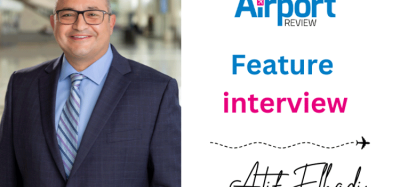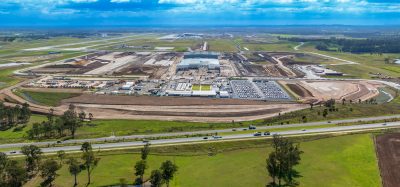Runway Friction Measurement Activities in the US
- Like
- Digg
- Del
- Tumblr
- VKontakte
- Buffer
- Love This
- Odnoklassniki
- Meneame
- Blogger
- Amazon
- Yahoo Mail
- Gmail
- AOL
- Newsvine
- HackerNews
- Evernote
- MySpace
- Mail.ru
- Viadeo
- Line
- Comments
- Yummly
- SMS
- Viber
- Telegram
- Subscribe
- Skype
- Facebook Messenger
- Kakao
- LiveJournal
- Yammer
- Edgar
- Fintel
- Mix
- Instapaper
- Copy Link
Posted: 7 June 2007 | Thomas J Yager, Senoir Research Engineer, NASA | No comments yet
During the past year, several new runway friction measurement activities have been initiated and progress has been made to improve measurement equipment, techniques and recommended procedures. The purpose of this article is to acquaint you, the reader, with recent developments including…
During the past year, several new runway friction measurement activities have been initiated and progress has been made to improve measurement equipment, techniques and recommended procedures. The purpose of this article is to acquaint you, the reader, with recent developments including:
- Annual NASA Tire/Runway Friction Workshop
- American Society of Testing and Materials (ASTM) E17 Committee on Vehicle-Pavement Systems activities
- University of South Florida/NASA/FAA effort to establish runway friction equipment calibration center
- Other programs related to improving safety of aircraft ground handling performance during takeoff and landing operations under adverse weather conditions
Nearly 100 representatives of pavement friction, texture and roughness measurement organisations from the United States, Canada, Japan, United Kingdom, Scotland, Hungary, Norway, Russia, Sri Lanka, Columbia, Guatemala and Australia attended the 14th Annual NASA Tire/Runway Friction Workshop at Wallops Flight Facility, VA, May 14-18, 2007. The Federal Aviation Administration (FAA) provided funding to cover Wallops support for this workshop and their goal to obtain sufficient measurements from Continuous Friction Measuring Equipment (CFME) to determine certification approval was exceeded. This data will be used to help revise the current FAA advisory circular on use of CFME’s at airports. The Russian team representatives from St. Petersburg indicated they plan to build an improved friction measuring trailer in time for next year’s workshop. Twenty-eight roughness measurements with two devices, 420 texture measurements with 6 devices and over 700 friction test runs with 13 CFME’s were 2 conducted on fourteen different pavement test surfaces under self-wet conditions. Daily morning briefings, good weather, excellent attendee cooperation and support together with much patience contributed to a very successful data collection workshop. All participants expressed a strong willingness to participate in the 15th annual workshop tentatively planned for May 12-16, 2008.
The ASTM E17 Committee members have been actively supporting an FAA request to revise and update two of their Advisory Circulars (A.C.) – one on the use of Continuous Friction Measuring Equipment (CFME’s) to monitor runway pavement friction for maintenance as well as operational conditions and the other A.C. concerning winter runway conditions. Recent new E17 Committee standards include E2100, “Standard Practice for Calculating the International Runway Friction Index (IRFI)” and E2340, “Standard Test Method for Measuring the Skid Resistance of Pavements and Other Trafficked Surfaces Using a Continuous Reading, Fixed-Slip Technique”. Several E17 Committee members are involved in supporting the University of South Florida’s efforts to establish a runway friction tester calibration center in Tampa, Florida. There will be a steering committee meeting in Norfolk, VA, during the next E17 Committee meeting, June 24-27, 2007. An ASTM mini-seminar panel discussion on recent issues concerning improvement in runway friction measurements will also be held on Wednesday morning, June 27.
Other ongoing projects related to this topic include evaluation of new materials for Engineered Material Arresting Systems (EMAS) to safely stop aircraft before encountering a crash scenario and development of improved skid resistant pavement 3 surfaces as well as tire tread designs, The Transportation Research Board has several Airport Cooperative Research Programs (ACRP) aimed at improving aircraft ground handling performance including preparation of a synthesis on runway rubber removal techniques to minimise damage to grooved runways. The next Summer Winter Integrated Field Technologies (SWIFT) Conference in Calgary, Alberta, September 16-20, 2007 will include over 30 technical sessions on many related airfield safety issues.
Have you ever played with a toy water gun? Some of the most popular water guns are the ones that are more powerful than the simpler designs. These fancy water guns may feature such things as battery power, multiple streams of water, or the use of air pressure to increase the force of the water. What is the most powerful water gun you’ve ever seen? Can you imagine a water gun so powerful it could move a 50-ton object, and make it move faster than a race car? That’s the sort of “toy” NASA gets to play with at its Aircraft Landing Dynamics Facility (ALDF). The ALDF is located at NASA’s Langley Research Center in Hampton, Virginia. The facility is used to test tires for aircraft landing gear and different types of pavement, trying to find combinations that allow the safest possible landings. Researchers test landing gear at the ALDF using an 853-meter [m] (2,800-foot) track. The landing gear is attached to a 45-metric-ton (50-ton) carriage, which is mounted on rails that run the length of the track. A water-jet nozzle is used to propel the carriage up to the desired test speed on the mock landing strip. While the facility was originally developed in the 1950s, the nozzle was later expanded to give it more power. This alteration was done so that the facility could be used for testing connected to the Space Shuttle program, enabling the nozzle to push the carriage at the high speeds associated with a Shuttle landing. The new nozzle is capable of propelling the carriage at speeds of up to 402 kilometers per hour (250 miles per hour), which is even faster than the speed of the Shuttle when it lands. The carriage is pushed for 122 m (400 feet), coasts for 549 m (1,800 feet), and then is brought to a stop within 183 m (600 feet). Testing performed at the ALDF has been an important part of work to develop new tires for the Space Shuttle, which are more maneuverable, less subject to wear, better able to land on wet surfaces, and capable of supporting a greater load.
Many commercial industries also take advantage of the ALDF to help make public transportation safer. Tire and brake manufacturers bring their prototypes to the facility in order to have them tested before moving ahead with production. Yager said that the ALDF provides an affordable way of performing this type of safety testing, explaining that the cost per run on the test track is only $50. The ALDF also makes it possible to detect problems in an environment where there is no risk of damage to an aircraft or injury to a pilot. In addition to research involving tires and braking equipment, the ALDF also does research on the actual pavement surface itself, studying such things as hydroplaning phenomena. Research performed at the ALDF contributed to the increasingly common use of grooved pavement for runways and roads. Researchers and engineers also use the ALDF in the development of new aircraft. When Boeing was designing its new 777 airliner, it turned to the ALDF for help testing a proposed new design of landing gear. The wide-bodied jet uses radial tires similar to the type that has been used on automobiles for years. Research to see how well such a tire could be adapted for use on airplanes was performed at the ALDF. The ALDF has even been used to research how practical skids and air cushions could be as aircraft landing gear. So while there are water guns on the market that do many amazing things, NASA has one that does something even more amazing—make airplane and ground vehicle operations safer.

















